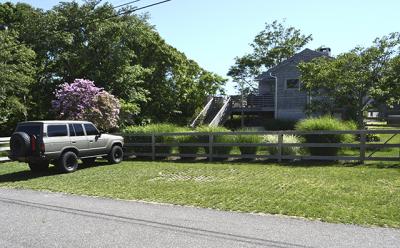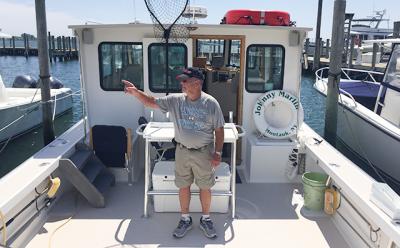Another Beach, Another Battle
Another Beach, Another Battle

Accusations and recriminations went flying from the moment Monday’s meeting of the East Hampton Town Trustees began at Town Hall, with a half-dozen residents of Driftwood Shores, a development in Springs, accusing a couple who recently built a house on the last undeveloped lot there of prohibiting the use of the beach in front of it.
The homeowners, Kenneth and Judith Reiss, insisted that they have no objection to anyone’s walking on the approximately 50 feet of beach in front of their house, but they said their deed extends to the mean high-water mark. Residents argued that access only to the beach below mean high water was unrealistic, at best, because of ongoing erosion. The Reisses told the trustees they felt “under siege” and complained of nonstop hostility and harassment.
The trustees, seemingly weary of multiple challenges to their jurisdiction over beaches on behalf of the public, and just a few hours after one of their number had testified at a trial about Truck Beach on Napeague, implored the neighbors to settle the matter amicably. Their attorney, Richard Whalen, however, said he would investigate the process — and the expense — of determining title to the disputed area.
Residents told the trustees that they, and in some cases multiple generations, had lived in the development for decades, using an access road to the beach and enjoying its unfettered use while other members of the public access it from the end of Springs-Fireplace Road. The Reisses “affirm the rest of us are only entitled to use the 20-foot-wide portion directly in front” of the access road rather than the beach in front of their house, which is wider due to the accretion of sand at a concrete groin, Peggy Backman of Driftwood Lane said.
Joseph Bradley said his family had owned property there since 1960 and had cared for and cleaned the beach throughout that span. The Reisses, he said, also object to property owners mooring their boats in the area of Gardiner’s Bay in front of their house. “If you buy land and build a house on waterfront property and you don’t want to see a boat,” Ed Cromer said, “I think you bought property in the wrong place.”
Ms. Reiss disagreed with her neighbors. “No one is being denied access to Gardiner’s Bay,” she said, and anyone can go to the beach. But “this entire community has made up their mind, they want to sit on our 50 feet.” She called four large chairs and kayaks that residents had put on the beach in front of their house a provocation, likening it to “sticking a flag in and saying ‘this is ours.’ ” When her husband said the residents do not congregate at any other portion of the beach, the response was “That’s not true!”
Ms. Reiss held a deed and property survey that she said proves they own the beach from the bulkhead at the upland to mean high water. Further, she said, her neighbors know this to be true, having previously appealed to the town attorney’s office. “It’s upsetting to know our neighbors knew this and totally ignored it. This is a private community: to come down Driftwood, you have to live there.”
“This is an old tale told again,” Mr. Whalen said. “Who owns the beach?” Most of the trustees’ original land grants date to the first half of the 18th century, he said, and extended to the bluff of the beach, “which I would interpret as not to the water, i.e., the trustees retained ownership of the beach.”
But matching those allotments to modern property ownership is not always easy. Sometimes, he said, it is discovered that a deed that extended to the bluff “suddenly ran to the water” when it was conveyed to a new owner. “In doing that, they’ve claimed ownership of beach where they didn’t have it,” in which case all subsequent claims would be invalid. “That is the issue as far as the trustees are concerned: We don’t know whether the beach is private because we don’t know whether the original land allotment went to mean high water.”
Referencing the Napeague beach litigation, Mr. Whalen suggested that if property owners in the development have had uninterrupted use of the beach for more than 10 years, they may have established prescriptive claim to it. But that “cannot be resolved in the absence of litigation.”
At the suggestion of Jim Grimes, one of the trustees, Mr. Whalen was asked to conduct a cursory investigation into ownership, as well as the trustees’ costs and potential liabilities. But Mr. Grimes also instructed the neighbors to “try to settle it amicably. It may mean everybody gives a little bit.”
“For some reason, our dream has nothing to with their dream,” Mr. Bradley said of the Reisses. The adversarial relationship, he said, is “not what Springs is about, not what East Hampton is about. We all live in peace, have a good time, enjoy the beauty of our places.”






